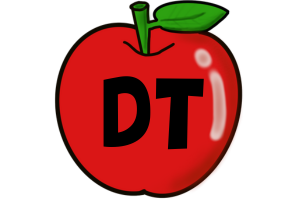Introduction:
In traditional education, students are often presented with a standardized curriculum that lacks personalization. This approach assumes that all students should study the same topics, follow the same learning path, and focus on the subjects suggested by others. However, this one-size-fits-all approach fails to recognize the individuality of students, their unique interests, and varying attention spans. As a result, many students resort to memorizing information rather than truly understanding it. This can lead to a lack of engagement and a superficial understanding of the subject matter. To address this issue, teachers can incorporate guiding questions into their teaching methodologies, enabling students to develop a deeper understanding, express their own thoughts, and cultivate a genuine love for learning.

What Are Guiding Questions?
Guiding questions are open-ended questions designed to foster dialogue between teachers and students. Unlike closed-ended questions that can be answered with a simple “yes” or “no,” guiding questions encourage students to think critically, reflect on their experiences, analyze information, and formulate their own ideas. They require students to provide detailed responses, leading to a more profound understanding of the subject matter and promoting meaningful discussions in the classroom.
Creating Effective Guiding Questions
Effective guiding questions are crafted to elicit thoughtful responses and engage students in meaningful conversations. Consider the following strategies when creating guiding questions:
- Begin with “Why” and “How”: Questions that begin with “Why” and “How” are particularly effective as they require students to provide detailed explanations, reasoning, and analysis. These questions stimulate higher-order thinking skills and encourage students to delve deeper into the subject matter.
Example:
- Why do you think historical events have shaped the world we live in today?
- How can we use mathematical concepts to solve real-life problems?
- Encourage Reflection: Guiding questions that prompt students to reflect on their own experiences, beliefs, and perspectives foster self-awareness and personal connections to the subject matter. They enable students to make meaningful connections between theory and their own lives.
Example:
- How has your cultural background influenced your perception of literature?
- Reflect on a time when you encountered a language barrier. How did it affect your communication and understanding?
- Stimulate Critical Thinking: Craft guiding questions that challenge students to analyze, evaluate, and synthesize information. These questions foster critical thinking skills and help students develop a deeper understanding of complex topics.
Example:
- Evaluate the impact of social media on society. What are its advantages and disadvantages?
- Analyze the arguments presented in the text. What evidence supports these arguments, and do you agree or disagree? Why?
The Benefits of Guiding Questions in Education
Integrating guiding questions into teaching methodologies offers numerous benefits for both teachers and students:
- Deepens Understanding: Guiding questions encourage students to think critically, analyze information, and make connections between concepts. This process leads to a deeper understanding of the subject matter, beyond surface-level memorization.
- Fosters Engagement and Interest: By encouraging students to express their thoughts and engage in meaningful discussions, guiding questions promote active participation and foster a genuine interest in learning. Students feel valued and empowered as they contribute their unique perspectives.
- Enhances Critical Thinking Skills: Guiding questions stimulate higher-order thinking skills, such as analysis, evaluation, and synthesis. Students learn to think critically, consider multiple perspectives, and develop well-reasoned arguments.
- Supports Personalized Learning: Guiding questions allow teachers to gauge individual students’ understanding, strengths, and weaknesses. This information enables teachers to tailor instruction to meet the specific needs of each student, providing targeted support and challenges.
- Cultivates Communication and Collaboration: Guiding questions facilitate meaningful discussions and collaborative learning environments. Students learn to articulate their ideas, listen to others’ viewpoints, and engage in respectful debates. These skills are essential for effective communication and teamwork.
Implementing Guiding Questions in the Classroom:
Incorporating guiding questions into daily classroom activities and lessons is a powerful way to foster critical thinking, engagement, and deeper understanding among students. Here are some strategies and techniques for effectively implementing guiding questions:
Introducing Guiding Questions:
- Begin a lesson or activity by posing a thought-provoking guiding question related to the topic.
- Frame the question in a way that sparks curiosity and encourages students to think deeply about the subject matter.
- Provide context and background information to set the stage for the guiding question and ensure students grasp its significance.
Facilitating Discussions and Student Participation:
- Create a supportive and inclusive classroom environment where students feel comfortable sharing their thoughts and ideas.
- Use various discussion formats such as small-group discussions, think-pair-share, or whole-class debates to encourage student engagement.
- Encourage active listening and respectful dialogue by establishing guidelines for participation and reinforcing the importance of valuing diverse perspectives.
Active Listening and Feedback:
- Model active listening by giving students your full attention during discussions and providing verbal and non-verbal cues that show you are attentively listening.
- Use probing follow-up questions to deepen students’ thinking and encourage them to provide more detailed responses.
- Provide constructive feedback that guides students towards deeper reflection and encourages them to refine their ideas or consider alternative perspectives.
Assessment and Evaluation with Guiding Questions:
Assessing student understanding, progress, and growth with guiding questions requires thoughtful evaluation methods aligned with the nature of these questions. Consider the following approaches:
Formative Assessment:
- Use formative assessments to gather ongoing feedback on student understanding and progress.
- Incorporate guided discussions, written reflections, and concept maps to assess students’ ability to analyze, synthesize, and apply knowledge in response to guiding questions.
- Provide timely and specific feedback that highlights strengths, identifies areas for improvement, and encourages further reflection.
Summative Assessment:
- Design summative assessments that assess students’ overall mastery of the subject matter explored through guiding questions.
- Consider performance tasks, projects, or presentations that allow students to demonstrate their understanding, critical thinking, and ability to articulate their ideas.
- Evaluate student responses based on criteria such as depth of analysis, coherence of arguments, and application of relevant evidence.
Adapting Guiding Questions for Different Learning Styles:
Recognizing and accommodating the diverse learning styles of students is crucial when adapting guiding questions. Consider these approaches for different learning styles:
Visual Learners:
- Supplement guiding questions with visual aids, such as infographics, diagrams, or videos, to enhance understanding and engagement.
- Encourage visual learners to create mind maps, graphic organizers, or visual representations to organize their thoughts and respond to guiding questions.
Auditory Learners:
- Promote oral discussions and debates related to guiding questions to engage auditory learners.
- Encourage students to articulate their thoughts through presentations, speeches, or audio recordings.
Kinesthetic Learners:
- Incorporate hands-on activities, simulations, or role-playing exercises that allow kinesthetic learners to physically engage with guiding questions.
- Provide opportunities for creating models, conducting experiments, or engaging in real-world applications related to the guiding questions.
Other Learning Styles:
- Offer a variety of response options to cater to different learning styles, such as written reflections, artistic representations, or multimedia presentations.
- Differentiate the complexity or depth of guiding questions to provide appropriate challenges for diverse learners.
Building a Bank of Guiding Questions:
Developing and curating a collection of guiding questions can greatly support effective teaching practices. Consider these strategies for building a bank of guiding questions:
Identify Relevant Topics:
- Determine the subjects and topics for which you want to develop guiding questions.
- Align the guiding questions with learning objectives, curriculum standards, and the interests of your students.
Collaboration and Resource Sharing:
- Collaborate with fellow educators, join subject-specific communities, or attend professional development sessions to brainstorm and share guiding questions.
- Utilize educational websites, online platforms, or question banks to access and share guiding questions with other teachers.
Categorize and Organize:
- Create a digital or physical repository to categorize and organize your guiding questions based on subject, grade level, or learning outcomes.
- Develop a system for tagging or keyword indexing to make it easy to retrieve relevant guiding questions for specific topics or teaching contexts.
Periodic Review and Enhancement:
- Continuously review and update your bank of guiding questions based on student feedback, emerging educational research, and personal reflections on their effectiveness.
- Seek feedback from colleagues or engage in peer collaboration to refine and improve your collection of guiding questions.
Engaging Parents and Caregivers with Guiding Questions:
Involving parents and caregivers in guiding question-based learning can create a strong partnership between home and school. Consider these strategies to engage parents:
Communication and Explanation:
- Communicate the purpose and benefits of guiding questions to parents through newsletters, parent-teacher conferences, or dedicated information sessions.
- Explain how guiding questions stimulate critical thinking, foster curiosity, and encourage deeper understanding of the subject matter.
Home Discussions:
- Share guiding questions with parents and encourage them to engage in discussions at home.
- Provide guiding question prompts or conversation starters that parents can use to facilitate conversations related to the topics being studied.
Supporting Resources:
- Recommend resources, such as books, articles, or websites, to parents that align with the guiding questions being explored in the classroom.
- Share additional materials, such as videos, documentaries, or podcasts, that further enrich the understanding of the guiding question topics.
Open Communication:
- Establish open lines of communication between teachers and parents, creating opportunities for dialogue regarding the use of guiding questions.
- Encourage parents to share their observations, experiences, or insights related to the guiding questions and the impact on their child’s learning.
Professional Development and Continued Learning:
To further develop your expertise in guiding question-based instruction, consider the following avenues for professional development:
Books and Resources:
- Explore books and resources that focus on inquiry-based teaching, questioning techniques, and the implementation of guiding questions.
- Recommended resources include “The Power of Inquiry: Teaching and Learning with Curiosity, Creativity, and Purpose” by Kath Murdoch and “Hacking Questions: 11 Answers That Create a Culture of Inquiry in Your Classroom” by Connie Hamilton.
Online Courses and Webinars:
- Enroll in online courses or webinars that offer professional development opportunities related to inquiry-based instruction and the use of guiding questions.
- Platforms such as Coursera, edX, and TeachThought provide a wide range of courses for educators.
Conferences and Workshops:
- Attend conferences, workshops, or seminars that focus on effective questioning techniques, inquiry-based learning, and guiding question strategies.
- Engage with educators, share experiences, and collaborate on best practices related to guiding question implementation.
Networking and Collaboration:
- Join professional learning networks, education forums, or social media communities to connect with other educators who are passionate about guiding question-based instruction.
- Engage in discussions, share experiences, and seek feedback from other educators to continuously enhance your practice.
By incorporating these additional sections into the article, educators will gain a comprehensive understanding of implementing guiding questions, assessing student learning, adapting to diverse learning styles, building question banks, engaging parents, and pursuing professional development.


